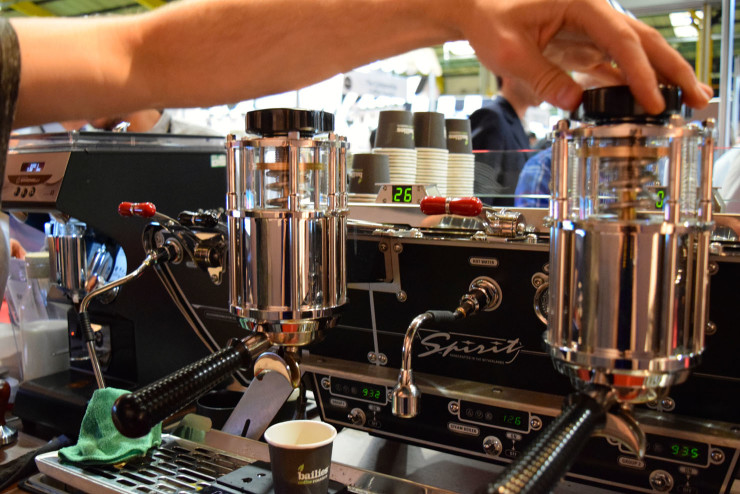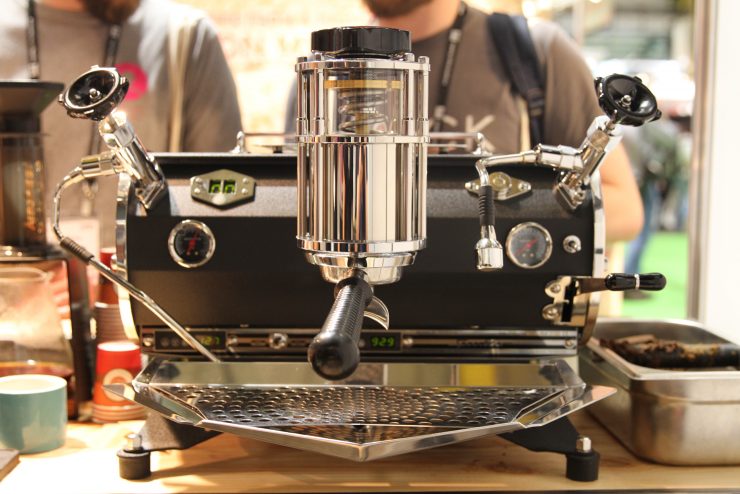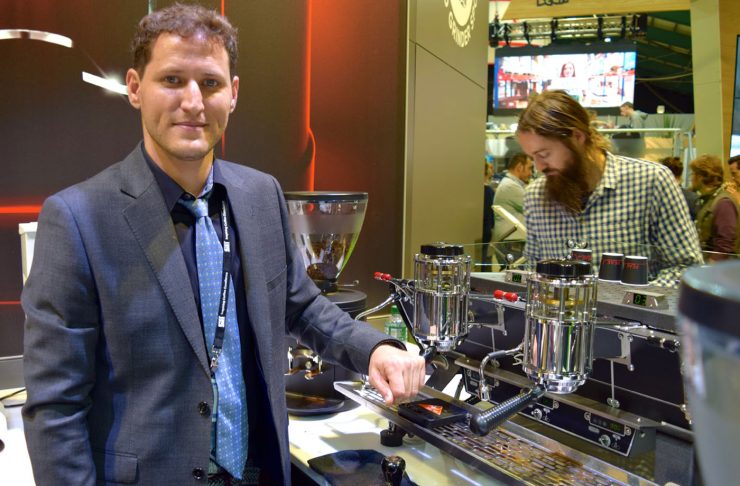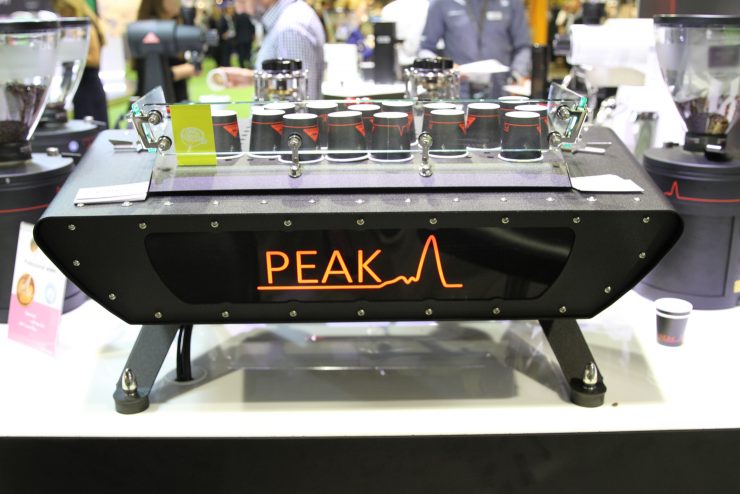
Kees van der Westen, the man, may be camera-shy, but the newest engineering development for his Spirit and Speedster espresso machines proved most photogenic in Dublin this week.
Making its global debut at the World of Coffee trade show is what the Kees van der Westen team calls a progressive pre-infusion cylinder system: PPIC for short. This technology allows a barista to take hands-on control of pre-infusion—that is, the initial wetting of the coffee puck that occurs before an espresso shot is extracted from a machine.
By simply turning a knob, the barista can now manually modify the pressure involved in the infusion process. A glass cylinder lets the barista see the spring-loaded piston in motion, relying on its rise as a visual cue and reading the pressure gauge for instant feedback. Plus, since each group has its own knob, a machine can have as many pre-infusion settings as there are groups. This also means that different espresso types or preparations can be simultaneously dialed in on a single piece of equipment.

Earlier this year, when Sprudge visited Kees van der Westen Espressonistic Works in Waalre, the Netherlands, it was clear that this particular parameter mattered to the industrial engineer renowned for his retro speed-inflected design. “We now are going to offer more and easier ways to adjust the infusion,” KVDW said then, alluding to this project then in the works.
And six months later, poof! Proof was scattered across the show floor of the Irish capital at World of Coffee. Of the three PPIC-fitted prototype machines in operation, the most prominently placed was a two-group Spirit with a customized PEAK panel at the Mahlkönig stand. Over in the microcosm of cafe and roaster booths known as The Village, a similar Spirit was commandeered by Bailies Coffee, the Belfast-based company that recently became a Kees van der Westen distributor for Ireland and Northern Ireland. Littlest but not least was the one-group Speedster being doted on by IMS, the group screen and filter basket specialists from Italy.

“We already had quite a nice infusion system,” Van der Westen says of the earlier Spirit and Speedster models, “but we found that people—baristas—want to play with adjusting things, getting feedback, and working on the machine. And yet, when they are done playing in the morning, everything should stay adjusted to their preferences.”
Precise pre-infusion reportedly has benefits such as preventing channeling, locking the fines in place, and optimizing grind quality. For laymen it’s a bit of a rabbit hole—explaining channeling, and the fight against it, could make for an entire other article. But for hardcore espresso enthusiasts and professionals, this is the stuff coffee dreams are made of.

Kess van der Westen engineer Omri Almagor.
According to mechanical engineer Omri Almagor, a finer grind is desirable for the light- and medium-roasted coffees popular in the specialty market. He explains: “You get more solids, you get more fibers, more fat, and then you can see much more crema than you usually see—usually the bright coffees look bad.”
Almagor, who works in the R&D division of Espressonistic Works, is credited by his boss for the winning idea of a transparent yet durable cylinder.
“I was thinking of slits, but glass is better,” Van der Westen says. “We like to keep things close to the human being. If people can see what’s actually happening inside, they can understand it very easily.”

Following some minor modifications and tests in real-time surroundings, the Kees van der Westen PPIC-fitted (and retrofitted) machines are expected to be available by October. In the meantime, the company welcomes preorders for what appears to be pre-infusion perfection.
Karina Hof is a Sprudge staff writer based in Amsterdam. Read more Karina Hof on Sprudge.
The post Kees van der Westen’s See-Thru Espresso Pre-Infusion Perfection Contraption appeared first on Sprudge.

